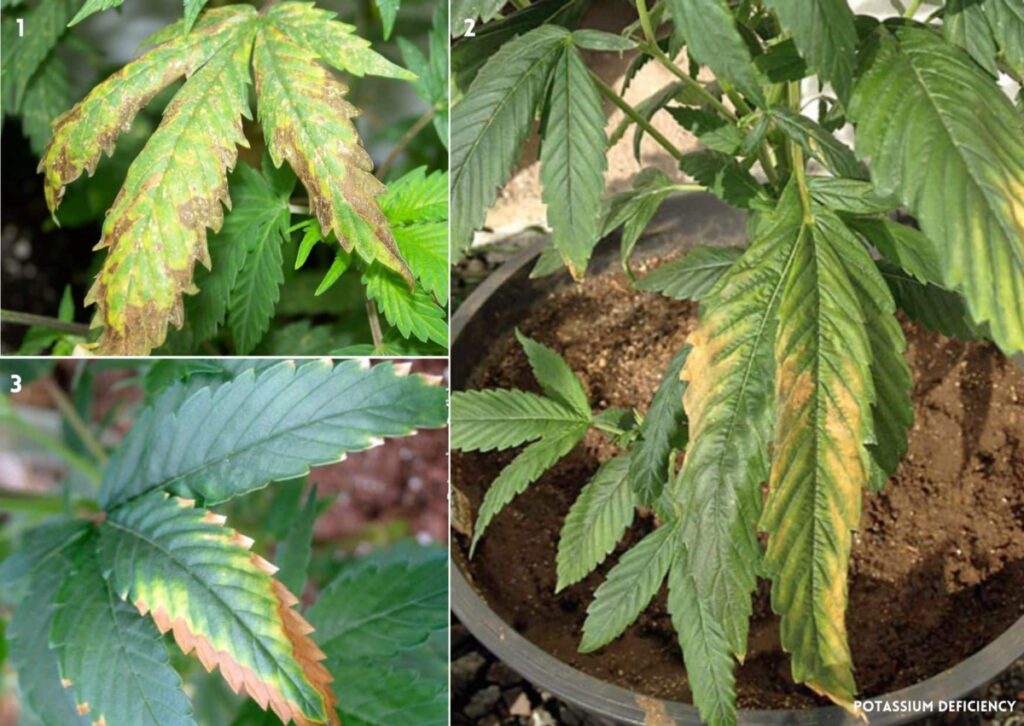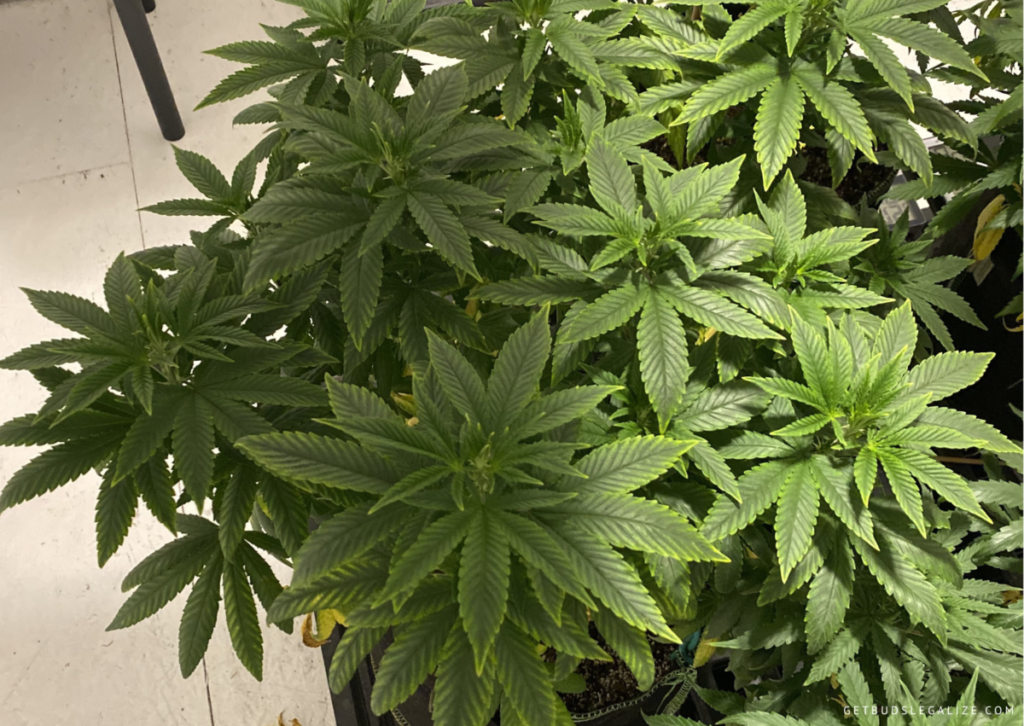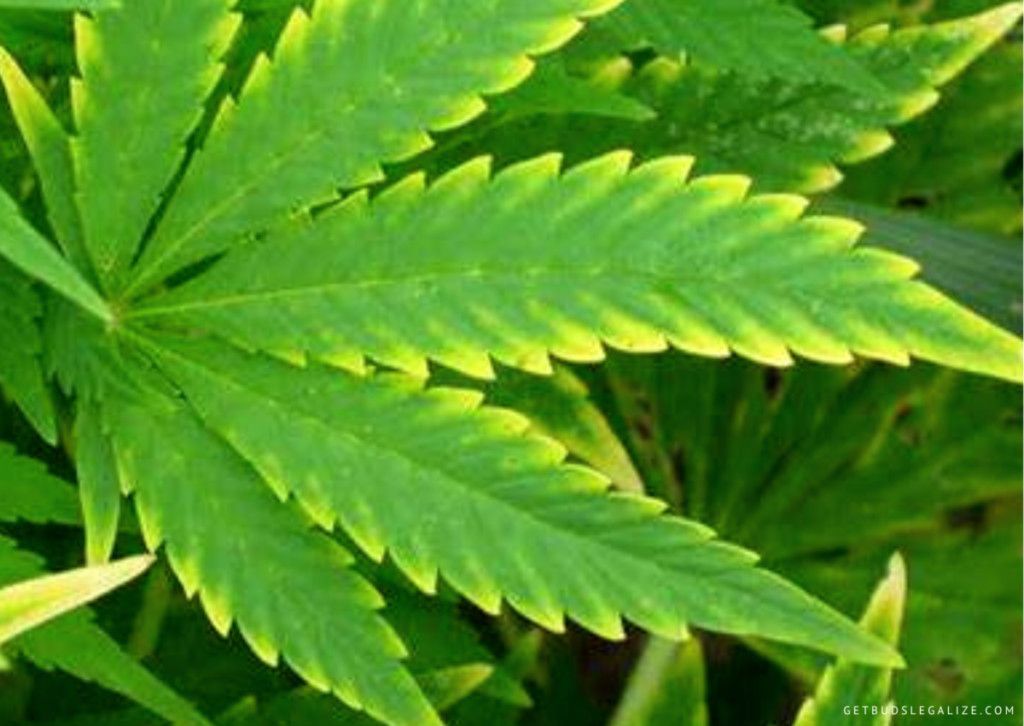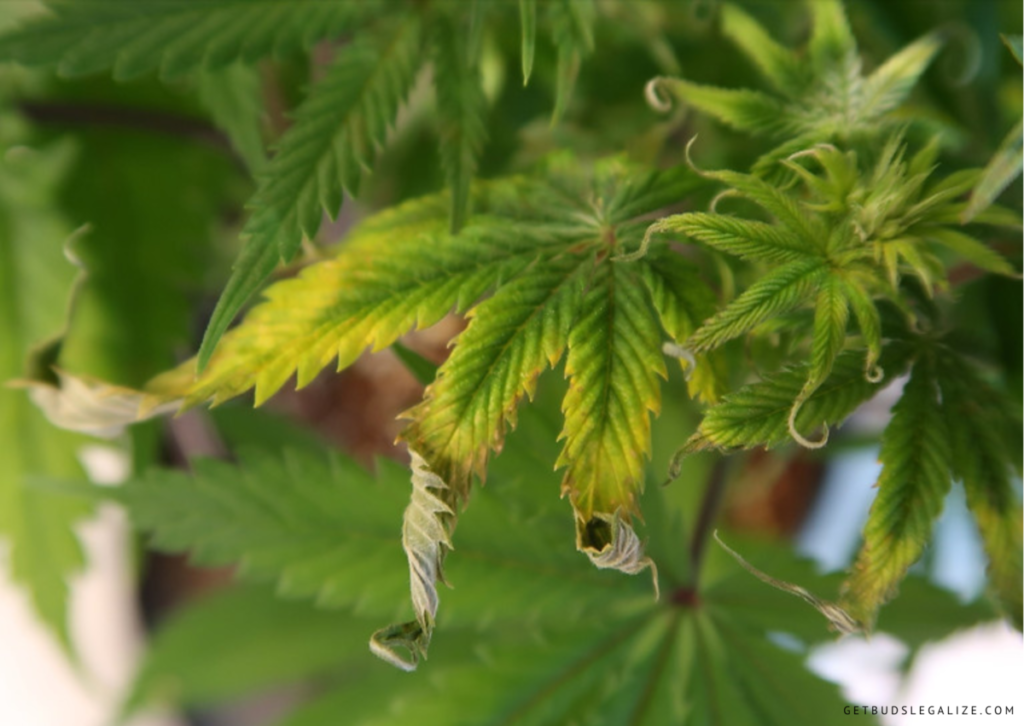Cannabis Potassium Deficiency: Causes, Symptoms, and Solutions
Potassium (K) is an essential nutrient for weed plants, as it helps them grow strong, healthy, and productive. However, sometimes your plants may suffer from a potassium deficiency, which can affect their growth and yield. In this blog post, we will explain the symptoms, causes, and treatments of potassium deficiency in marijuana plants.
How to Identify Potassium Deficiency in Cannabis
Potassium is one of the three macronutrients that cannabis needs for healthy growth and bud development. It plays a vital role in water transport, photosynthesis, stem strength, disease resistance, and cold tolerance. However, sometimes cannabis may suffer from a deficiency of it, which can affect their overall health and yield. Here are some ways to identify it:
- The edges and tips of the older leaves at the bottom of the plant turn yellow or brown, while the veins remain green. This is called chlorosis, and it means that the plant is unable to produce enough chlorophyll to maintain its green color.
- The affected leaves develop brown spots or patches on their surface, which indicate necrosis or tissue death. The leaves may also curl or wilt, as they lose their ability to absorb and transport water.
- The stems and branches of the plant become weak or brittle and may break or bend easily. This is because potassium helps to strengthen the cell walls and support the plant structure.
- The buds of the plant grow smaller and less potent, as a deficiency of potassium reduces the photosynthesis and metabolism of the plant. Potassium also helps to produce terpenes and cannabinoids, which are responsible for the aroma and effects of cannabis.
If you notice any of these symptoms, you should act quickly to correct the problem.
What are the Causes of Potassium Deficiency in Marijuana Plants?

A deficiency of potassium can occur due to various reasons and affect the plant’s growth and quality. Some of the common causes are:
Low potassium content or availability in the soil or water:
This can happen if the soil is naturally poor in potassium or if the water source is filtered or purified. To prevent this, use a balanced fertilizer that contains adequate amounts of potassium or supplement with a potassium-rich additive such as wood ash, kelp meal, or sulfate of potash.
The high pH level of the medium:
This can interfere with the root’s ability to absorb potassium from the soil or water. To prevent this, adjust the pH level of the medium to the optimal range for plants of marijuana, which is between 6.0 and 7.0. Use a pH meter or test kit to monitor the pH level regularly and use pH up or down products to correct it if needed.
Excessive nitrogen or calcium intake:
This can compete with potassium for uptake and transport in the plant tissues. To prevent this, avoid overfeeding your plants with nitrogen or calcium-rich fertilizers or additives. Follow the recommended dosage and frequency of feeding for your plants and use a balanced fertilizer that contains all the essential nutrients in proper proportions.
Improper watering:
This can affect the root’s health and function and reduce potassium uptake. To prevent this, water your plants according to their needs and avoid overwatering or underwatering them. Overwatering can cause root rot and oxygen deprivation, while underwatering can cause root shrinkage and dehydration. Check the moisture level of the medium before watering and use a well-drained medium that allows excess water to drain out.
High temperatures or light burn:
This can increase the potassium demand and consumption by the plant, as it enhances photosynthesis and transpiration rates. To prevent this, maintain a suitable temperature and light environment for your plants and avoid exposing them to extreme heat or light stress.
The optimal temperature in your grow room range between 20°C and 28°C (68°F and 82°F), while the optimal light intensity is between 400 and 700 micromoles per square meter per second (µmol/m2/s).
How to Treat Potassium Deficiency

If you notice any of the above symptoms in your plants, you should act quickly to correct the problem. Here are some steps you can take to treat a marijuana potassium deficiency of potassium:
1. Check the pH of your growing medium and water: Potassium is best absorbed by your plants when the pH is between 6.0 and 7.0. If the pH variation is too high or too low, it can lock out potassium and other nutrients from your plants. Adjust the pH accordingly using pH up or down products.
2. Flush your plants with plain water or a mild nutrient solution: This will help remove any excess salts or nutrients that may be interfering with potassium uptake. Flushing will also help restore the balance of your soil or hydroponic system.
3. Feed your plants with a high-potassium fertilizer: You can use organic or synthetic sources of potassium, such as wood ash, kelp meal, banana peels, potassium sulfate, or monopotassium phosphate. Follow the instructions on the label and avoid overfeeding your plants.
4. Monitor your plants closely and look for signs of improvement: You should see the symptoms of potassium deficiency fade away within a week or two. If not, you may need to repeat the steps above or consult a professional grower for advice.
How to Prevent Potassium Deficiency


A deficiency of potassium can be prevented by following some simple guidelines and best practices. You can avoid this by following these simple procedures:
1. Choose a high-quality growing medium that has adequate amounts of potassium and other nutrients. You can also amend your soil with organic matter or compost to improve its fertility and water retention.
2. Use a balanced fertilizer that has a proper ratio of nitrogen, phosphorus, and potassium (N-P-K). For vegetative growth, you want a fertilizer that has more nitrogen than phosphorus and potassium (such as 10-5-5). For the flowering phase, you want a fertilizer that has more phosphorus and potassium than nitrogen (such as 5-10-10).
3. Follow a feeding schedule that matches the needs of your plants at different stages of growth. You should feed your plants more frequently and with higher doses during the vegetative stage, and less frequently and with lower doses during the flowering stage. You should also stop feeding your plants about two weeks before harvest to flush out any excess nutrients and improve the taste and aroma of your buds.
4. Monitor the pH of your growing medium and water regularly and adjust it as needed. You can use a pH meter or pH test strips to measure the pH level of your soil or hydroponic solution. You can also use a pH buffer solution to stabilize the pH and prevent fluctuations.
5. Keep an eye on your plants for any signs of nutrient deficiencies or toxicities. If you notice any changes in the color, shape, or texture of your leaves, stems, or buds, you should investigate the cause and take corrective measures as soon as possible.
Recognizing Potassium Toxicity in Marijuana Plants
While a deficiency of potassium is more common, cannabis can also suffer from potassium toxicity if they get too much of this nutrient. Potassium toxicity can interfere with the absorption and balance of other nutrients, such as magnesium, calcium, and iron. To recognize it correctly, you need to look for signs of nutrient burn and other symptoms, such as:
- The young upper leaves turn yellow, especially between the veins. This is because excess potassium reduces the production of chlorophyll, which gives the leaves their green color.
- The edges of the leaves become brown and crispy as if they were burnt by heat or light. This is because excess potassium causes salt buildup in the plant tissues, which dehydrates and damages them.
- The new upper leaves have thin and narrow blades, instead of broad and flat ones. This is because excess potassium affects the development and structure of the leaves.
What Are the Cause of Potassium Toxicity
One possible cause of potassium toxicity in cannabis is overfeeding them with nutrients that contain high levels of potassium, such as PK boosters. This can lead to a nutrient lockout, where the plant cannot absorb other essential elements like calcium, magnesium, and zinc. Potassium toxicity can also result from a pH imbalance in the growing medium, which affects the availability of different nutrients.
How to Treat Potassium Toxicity?
If you suspect that plants have potassium toxicity, you should take the following steps to correct it:
1. Stop using any products that contain high amounts of potassium, such as wood ash, kelp meal, or sulfate of potash.
2. Flush your growing medium with plenty of water to wash away the excess potassium. You may need to do this several times until the runoff water has a normal pH and EC level.
3. Adjust your pH to the ideal range for your plants. For soil growers, this is between 6.0 and 7.0. For hydroponic growers, this is between 5.5 and 6.5. A balanced pH will help your plants absorb other nutrients more efficiently and prevent further imbalances.
4. Add some magnesium or calcium supplements to your nutrient solution or soil. These elements will help counteract the effects of potassium toxicity and restore the health of your plants. You can use products such as Epsom salt, dolomite lime, or calcium nitrate.
5. Keep an eye on your plants and look for signs of recovery. You should see new growth that is green and healthy, and old leaves that gradually fade and fall off. If you don’t see any improvement after a few weeks, you may need to repeat the steps above or consult an expert for advice.
Conclusion
Potassium is one of the most important cannabis nutrients, affecting many aspects of their growth, health, and quality, but too much or too little can cause problems. By knowing how to identify and treat it, you can ensure your plants stay healthy and productive.
Cannabis Potassium Deficiency Fix - FAQs
A Nutrient deficiency in Potassium in your cannabis grow can be fixed by applying organic or synthetic fertilizers that contain potassium, such as compost, manure, wood ash, or potash. You can also adjust the soil pH, moisture, and temperature to improve potassium uptake by plants.
Potassium deficiency during the flowering stages can cause several symptoms in plants, such as:
- Yellowing or browning of leaf edges and tips
- Curling or wilting of leaves
- Poor fruit development and quality
- Reduced resistance to pests and diseases
Potassium is essential for many plant functions, such as photosynthesis, water transport, and sugar production.
A deficiency in Potassium is a common problem that affects cannabis plants, especially during the flowering phase. It can cause yellowing, browning, and burning of the leaf edges and tips, as well as stunted growth and poor bud development. Potassium is essential for water and nutrient transport, temperature regulation, and energy production in cannabis plants.
A lockout of potassium is a condition that prevents cannabis from absorbing enough potassium, which is essential for its growth and development; And can be caused by several factors, such as:
- Low or high pH levels in the soil or water
- Excessive salt buildup in the growing medium
- Over-fertilization or nutrient imbalance
- Root damage or disease
- Environmental stress such as drought, heat, or cold
Potassium is an essential nutrient for cannabis, as it helps them produce strong stems, healthy roots, and abundant buds. A good source of potassium for cannabis plants is wood ash, which can be added to the soil or mixed with water and sprayed on the leaves. Wood ash contains about 3-7% potassium, as well as other minerals that can benefit the soil and the plants. However, wood ash also raises the pH of the soil, so it should be used sparingly and only in acidic soils.
A deficiency in Potassium in cannabis can cause yellowing of the leaves, reduced growth, and lower yields. The solution for potassium deficiency is to apply a balanced fertilizer that contains potassium, such as 10-10-10 or 20-20-20. Alternatively, organic sources of potassium, such as wood ash, kelp meal, or banana peels, can be added to the soil or compost. Potassium deficiency can be prevented by maintaining a proper pH level in the soil and avoiding overwatering or overfeeding the plants.
Potassium is an essential nutrient for cannabis, but it can be deficient in some soils. Two signs of a lack of potassium in plants are yellowing of the leaf margins and weak stems that are prone to breaking.
A cannabis potassium deficiency can cause various symptoms on the leaves, such as:
- Brown or burnt tips and edges of the leaves
- Yellowing around the edges of the leaves, while the veins remain green
- Pale, bleached, or yellow spots on the leaves
These symptoms usually appear on older leaves, but sometimes they can affect newer growth as well. A deficiency in potassium can also reduce bud size and density, and make plants more susceptible to stress and pathogens.

















